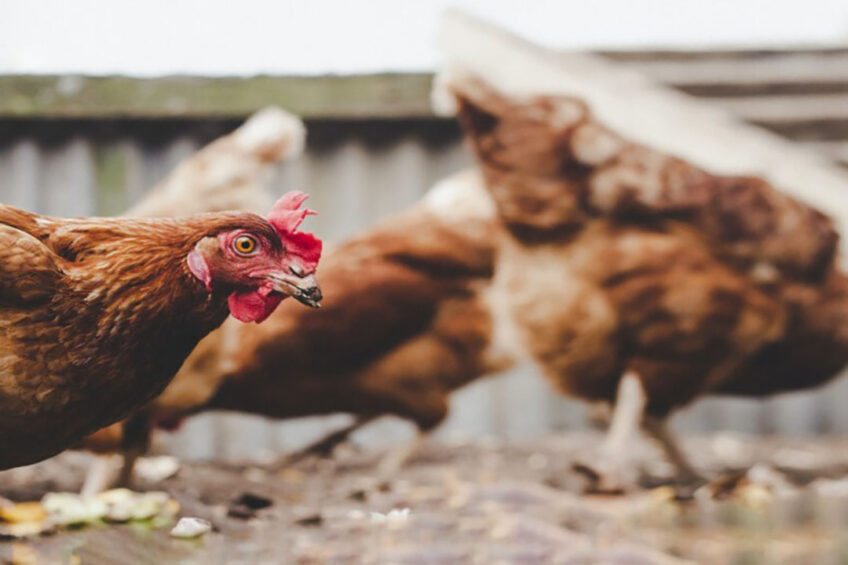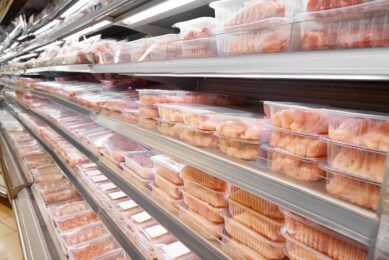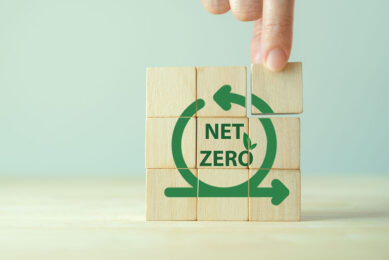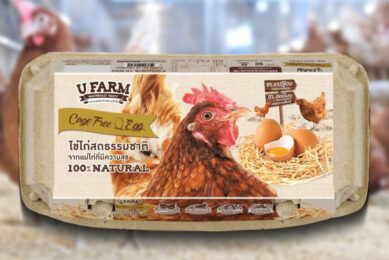Reducing emissions for the broiler and egg-laying sectors

Greenhouse gas emissions could be reduced from the main livestock types by 23% and ammonia emissions by 15% if wide-scale and highly effective mitigations are adopted across UK farms.
The report from the Centre for Innovation Excellence in Livestock emphasises the need for most farmers to focus on improving flock or herd production efficiency to reduce their carbon footprint. With input costs being top of mind for many in the agricultural sector, the potential efficiencies around feed, forage and nutrient management are particularly pertinent.
Feed, manure, fuel, bedding and electricity
Seven options have been put forward to reduce emissions in the poultry meat sector, where 82% of emissions are linked to purchased feed, 9% to manure management, 6% to fuel, 2% to purchased bedding, and 1% to electricity:
- Replacement of soya beans associated with land use change in the diet is critically important due to the typically high carbon footprint of soya. Homegrown protein not associated with land use change (rapeseed meal and legumes) has the greatest impact in reducing the carbon footprint of poultry meat, but, this will not significantly reduce UK greenhouse gas emissions as most emissions from soya occur in other countries.
- Genetic improvement to increase feed efficiency and enhance animal health will lead to only small reductions in carbon footprint as such traits have already been subjected to intense genetic selection.
- Several alternative protein sources, such as insect meal, algae and microbial protein, may have the potential to reduce the carbon footprint of poultry production and are being considered for use in the UK.
- Improvements in feed processing technologies and the inclusion of specialist ingredients, such as synthetic amino acids and enzymes, can deliver some reduction in the carbon footprint of poultry meat production systems.
- Precision feeding and management strategies have the potential to reduce emissions but come at a high cost. Technological advances may make such strategies more economical and more readily available in the longer term.
- Physical treatment of manure, such as improved stacking, pelleting reduces greenhouse gas emissions. These can be reduced further by chemical and biological means but information about the optimal design and economic feasibility is lacking for these mitigations.
- Alternative manure management systems such as using litter as fuel or a substrate for anaerobic digestion, instead of spreading it on fields, can reduce greenhouse gas emissions and deliver other environmental benefits through the reduction of ammonia emission and other odours.
Seven options to reduce greenhouse gas emissions in the egg-laying sector, which is the least environmentally impacting livestock commodity in terms of UK greenhouse gas emissions, are:
- Genetic improvements around enhancements in bird health leading to hen longevity
- The contribution of pullets to the environmental impact of egg production is considerable (20-25% of carbon footprint). Options for reducing greenhouse gas emissions from pullets include management and dietary mitigations, such as the use of home-grown protein sources.
- Although lower than broiler diets, reducing imported soybean meal.
- Dietary manipulation, such as reducing the crude protein content of feed, improvements in feed processing technology and inclusion of specialist ingredients, such as synthetic amino acids and enzymes, are associated with some reduction in the carbon footprint of egg production.
- Precision feeding and management strategies have the potential to reduce emissions but may be expensive.
- Physical treatment of manure (as above for broilers).
- Alternative manure management systems (as above for broilers).
Broiler case study where beans replaced soybean meal
The Centre for Innovation Excellence in Livestock undertook a broiler case study, where beans were used to replace soybean meal as an alternative protein source. It found that there was essentially no change in greenhouse gas emissions from broiler systems when approximately 50% of soybean meal in the diet was replaced by beans (when these ingredients were not associated with land use change). However, when ingredients were associated with land use change, replacing soybean meal with beans resulted in a reduction of 20% of greenhouse gas emissions from the broiler system.
Poultry compound feed company, ABN, said clear thinking was required for a profitable low carbon poultry industry. Brian Kenyon, ABN’s senior nutrition manager, said adjusting poultry diets to meet sustainability requirements and reducing soya reliance would bring challenges and require realistic timeframes. Clarity was also needed from the industry as to what was meant by a soya-free diet.
“Are soya derivatives such as soya oil allowed, or will they need to be replaced as well? Soya meal itself can be replaced by a number of existing materials, such as beans and rapeseed, though time and effort will be needed to develop the supply chain and the right processing techniques needed to maximise their effectiveness. Soya oil alternatives are not as readily available, and we may have to revisit the use of tallows.”
Net Zero and Livestock: How Farmers can Reduce Emissions can be found here.













